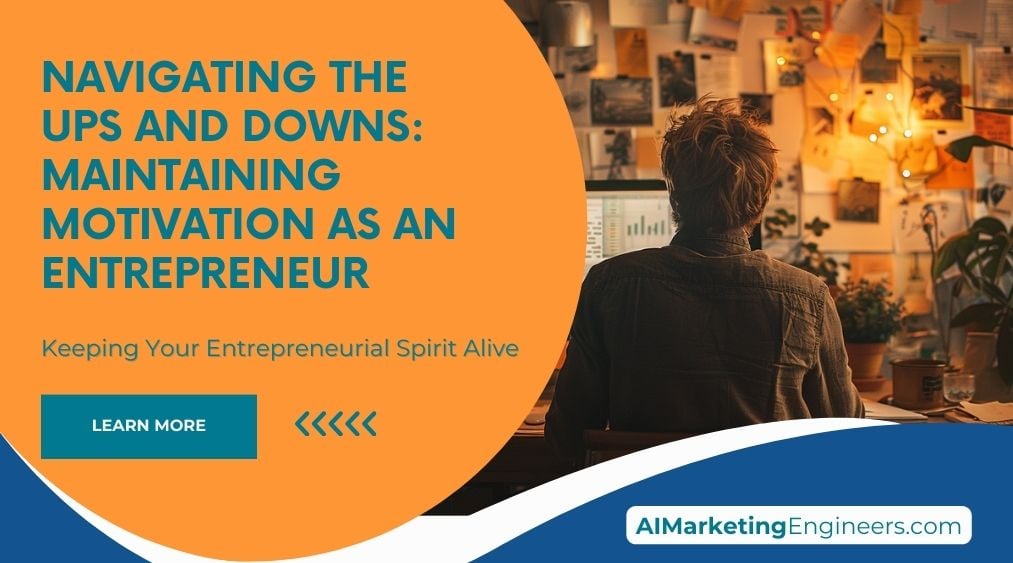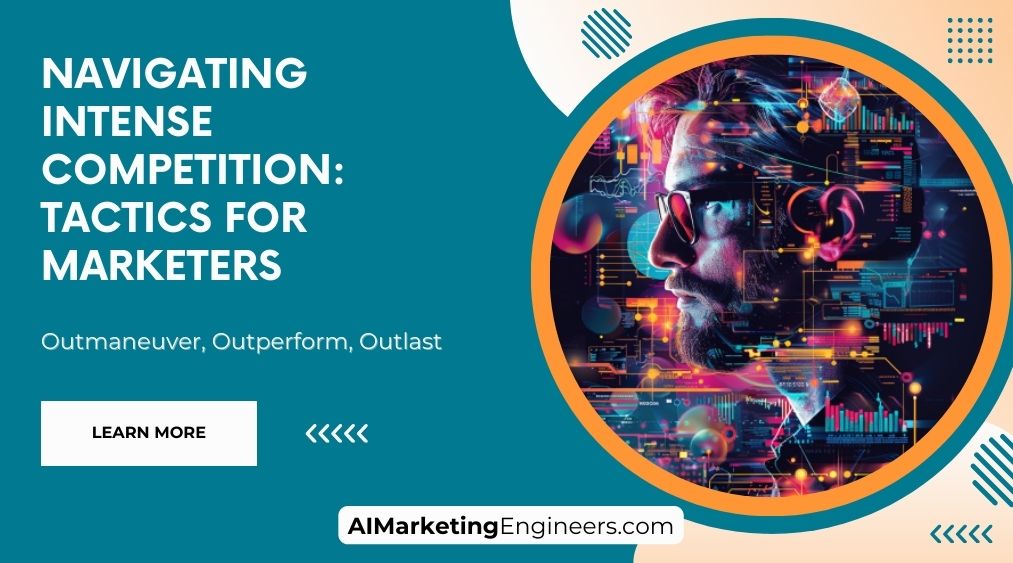Key Takeaways
✅ Optimize User Experience Metrics: Engage users on your site by fine-tuning their experience. Implement A/B testing to enhance metrics such as time spent on a page and form interaction rates. Statistics show that small changes, like adjusting form fields, can lift conversion rates by up to 25%. Capture the visitor’s interest more effectively and see your conversion rates climb.
✅ Effective Landing Page Design: Your landing page is your digital storefront. A compelling design is key, and A/B testing shows you what works best. For instance, simply tweaking your call-to-action button can increase conversions by up to 20%. Test elements like headlines, imagery, and social proof to unravel what clicks with your audience and keep them coming back for more.
✅ Continuous Testing and Improvement: Don’t rest on your laurels; the digital market is always shifting. A/B testing isn’t a one-off but an ongoing strategy for staying ahead of the curve. Regular tweaks, based on solid data, can lead to sustained improvements with some tests yielding over 30% more engagement. Make your landing page a conversion machine through persistent optimization efforts
Introduction
Ever wondered why some websites reel you in while others just don’t cut it? It’s no magic – it’s the power of A/B testing and enhanced user experience carving the path for higher conversion rates. In a world where a 1% increase in conversion can mean a significant revenue spike, can you afford to overlook these tactics?
It’s all about the sweet spot where effective landing page design meets precision data analysis. Take a step into modern marketing; it’s where crisp headlines coalesce with eye-catching imagery, where every click and scroll tells a story, leading to insights that can revolutionize your online presence. This article is laden with up-to-the-minute trends and methods aimed at boosting your revenue, ROAS, and ROI through systematic, user-focused testing and design.
Prepare to dive into a treasure trove of actionable insights and transformative information. Sharpen your competitive edge, elevate user satisfaction, and watch your conversion rates soar. The digital landscape is evolving, and this is your guide to navigating it successfully.
Understanding the Importance of A/B Testing for Landing Pages
A/B testing sits at the core of boosting a landing page’s performance. Have you ever wondered why some websites seem to have the magic touch, turning clicks into customers? The secret is in the testing. By presenting two variants, A and B, to users at random, businesses can capture real-world reactions to different versions of their landing page. Which headline catches more attention? Does a certain color button get more clicks? The answers aren’t just opinions but are backed by solid data. Through meticulous A/B testing, companies have seen conversion rates soar, with some businesses even observing improvements by up to 40%. It’s more than just tweaking; it’s about understanding your visitors and making changes that resonate.
Key Elements to Test for Enhanced User Experience
A landing page is like the face of your online campaign, and to be frank, you want it to look its best. Testing the headlines and copy is telling: the right words can make someone stay, and the wrong ones can make them leave. A punchy headline can make the difference between a product gaining a lifelong customer or being passed over. Then, there are the forms – reducing fields from 11 to 4 can increase conversion rates by up to 20%. It’s about striking a balance between gathering necessary information and not overwhelming visitors. Visual elements, too, play a silent yet persuasive role. Did you know that changing button colors can lift conversion rates by 21%? Sometimes it’s the subtle changes that can have a remarkable effect on a user’s experience.
Effective A/B Testing Techniques
A/B testing is no wild guesswork – to get accurate results, you’ve got to be a bit more methodical. Test one element at a time to know precisely what’s working. This way, you can pinpoint which changes are influencing user behavior. To ensure the changes you make are good ones, construct SMART hypotheses; think of them as the roadmap of your testing process. When conducting tests, it’s crucial to split traffic equally between versions to avoid skewed data. Remember, in A/B testing, the beauty lies in the detail.
Avoiding Common Mistakes and Misinterpretation
While A/B testing can feel like hitting a gold mine, it’s not free from pitfalls. Committing a Type I or False Positive Error is like celebrating a win that never happened – thinking a change has made an impact when, in reality, it hasn’t. And don’t get fooled by the numbers. Adequate traffic sample size is key; without it, you’re basically taking stabs in the dark. It’s like figuring out a city’s favorite ice cream flavor by asking only three people. To get the full picture, you need a big enough crowd to see the true trends.
Tools and Best Practices for A/B Testing
Thankfully, you don’t have to do it all manually; there’s a host of A/B testing software out there, like VWO or Google Optimize, that can help crystallize your marketing decisions. But even with the best tools at your disposal, the importance of regular testing can’t be overstated. People’s preferences evolve, trends change, and what worked yesterday might not work tomorrow. Taking a deep dive into analyzing results will guide your long-term strategy and keep your landing pages fresh and effective. After all, the goal is not just to attract clicks, but to convert them into satisfied customers.
AI Marketing Engineers Recommendation
Recommendation 1: Prioritize Mobile-First Design: Prioritize mobile-first design by implementing responsive layout features and faster loading times. Statistics show that in 2020, 68% of website visits came from mobile devices. Mobile users are also five times more likely to abandon a task if a site isn’t optimized for mobile. To address this, ensure your website is responsive and loads quickly on all devices. Use A/B testing to compare different mobile layouts and functionalities to determine which configurations yield the highest conversion rates. By focusing on mobile optimization, you can provide a seamless user experience that keeps visitors engaged and reduces bounce rates, ultimately boosting your conversions.
Recommendation 2: Leverage Data for Personalized User Experience: Leverage data on user behavior to personalize the user experience. By utilizing AI and machine learning to analyze how users interact with your site, you can customize landing pages to display content, offers, and calls to action that resonate with your audience’s preferences. Businesses that personalize web experiences see an average of 19% uplift in sales. Create two versions of your landing page with different levels of personalization and use A/B testing to identify which version achieves better engagement and conversion. This approach not only enhances user satisfaction but also increases the likelihood of conversions by addressing the unique needs and preferences of each visitor.
Recommendation 3: Incorporate Strong Calls to Action: Incorporate strong, clear calls to action (CTAs) balanced with eye-catching visuals to guide users naturally through your landing page to conversion. Data suggests that personalized CTAs convert 202% better than default versions. Utilize tools such as Google Optimize or Adobe Target to A/B test variations of your CTAs in both placement and phrasing to find the combination that converts best. Ensure that the visual hierarchy on the page clearly leads to the CTA, making it the focal point. By optimizing your CTAs, you can create a more intuitive and persuasive user journey that encourages visitors to take the desired action.
Relevant Links
A/B Testing Unleashed: Optimize Your Landing Page Now!
Make Data-Driven Decisions with Google Optimize
Craft Irresistible Headlines with Copywriting Secrets
Convert Visitors into Customers with Persuasive Copy Techniques
Designing for Conversions: Colors That Click
Conclusion
In the quest to elevate conversion rates, A/B testing stands out as a pivotal strategy. It’s a technique that allows for a pinpointed examination of your landing pages, turning guesswork into data-driven decisions. By understanding the importance of A/B testing, businesses can isolate what truly connects with their audience and makes a visitor more likely to take action.
Testing elements like headlines, forms, and visual components not only sharpens the user’s experience but often leads to a significant lift in ROI. However, it’s not enough to run tests; employing effective A/B testing techniques is key. This involves testing one variable at a time, crafting SMART hypotheses, and ensuring that traffic is split equally to avoid skewed results.
But watch out for pitfalls. Falling prey to common errors such as Type I errors or working with an inadequate sample size can undermine your efforts and lead to false conclusions. Leveraging robust A/B testing tools and embracing a culture of regular testing ensures that your landing page stays optimized and relevant.
As you move forward, remember that the landscape of user preferences is ever-changing. The insights gained from today’s tests may need to be revised tomorrow. So what’s the bottom line? Be vigilant, be adaptable, and continuously test and refine to keep your landing pages at peak performance. Will you embrace the rigors of A/B testing to uncover what works best for your audience and enhance your user experience? The proof is in the pudding—or rather, in the conversion rates.
FAQs
Question 1: What is A/B testing?
Answer: A/B testing, also known as split testing, is a comparing method for two landing page versions to see which one gets you more sign-ups, sales, or any action you’re hoping for.
Question 2: Why is A/B testing important for landing pages?
Answer: It’s all about making your landing pages work better for you. A/B testing lets you make smart choices based on real numbers so you can get more people to take action without guessing.
Question 3: What are the key benefits of A/B testing for landing pages?
Answer: You’re looking at making decisions based on solid data, upping your game in getting more people to take action, and steering clear of expensive mistakes.
Question 4: What are the different types of A/B testing?
Answer: There are a few: simple A/B testing where you change one thing at a time, split testing which is another name for A/B testing, and multivariate testing where you change a bunch of things at once to see what combo works best.
Question 5: How do I choose the right A/B testing tool?
Answer: Pick a tool that fits what you can spend, what you need it to do, and how techy you are. Some popular ones include Google Optimize, Optimizely, and VWO.
Question 6: What are the essential elements to A/B test on a landing page?
Answer: You’ll want to look at your headlines, those call-to-action buttons, the images and general look, your words and messages, how your page is laid out, and stuff like testimonials to see what makes people click.
Question 7: How do I plan an A/B test?
Answer: Start by figuring out what you want to achieve, grab the tools that’ll help you get there, know who you’re talking to, and work up a rough sketch of your ideal visitor to guide your plans.
Question 8: How long should I run an A/B test?
Answer: Keep it going until you have trustworthy data to make a call. That can be a week or two for busy sites, or longer if you’re not getting as much traffic.
Question 9: What metrics should I track during an A/B test?
Answer: Keep your eyes on important stuff like how many people are adding products to their carts, signing up for newsletters, giving feedback, sticking around on your page, bouncing off, and downloading things.
Question 10: How do I analyze and implement the results of an A/B, test?
Answer: Check out your test data, pick the version that did better, and then show that version to everyone. Keep testing new things periodically so you can keep up with what your visitors want.
Academic References
- Kohavi, R., & Longbotham, R. (2017). Online Controlled Experiments and A/B Testing. Encyclopedia of Machine Learning and Data Mining, 1-14. This influential entry offers a deep dive into the methodologies and importance of A/B testing within the field of machine learning and data mining. It outlines key considerations for conducting online controlled experiments.
- Christian, B. (2012). The A/B Test: Inside the Technology That’s Changing the Rules of Business. Wired. This article explores how A/B testing has become an integral tool in fine-tuning business technology, impacting decision-making processes, and tailoring user experiences.
- Chapman, C. (2020). How To Use A/B Testing To Build Buyer Personas. Forbes. This piece analyzes the application of A/B testing in constructing and refining buyer personas, thereby aiding businesses in targeting and engaging with their ideal customer segments more effectively.
- Goldfarb, A., & Tucker, C. (2011). Online Display Advertising: Targeting and Obtrusiveness. Marketing Science, 30(3), 389-404. In this academic journal article, the authors discuss the delicate balance of targeting in online advertising and the potential negative effects of being too intrusive, highlighting the role of A/B testing in finding that balance.
- Patel, S., & Naughton, K. (2019). Landing Page Optimization: The Definitive Guide to Testing and Tuning for Conversions. Wiley. A comprehensive guide to optimizing landing pages, this book covers practical frameworks for conducting effective A/B testing that leads to higher conversion rates and more nuanced user comprehension.





